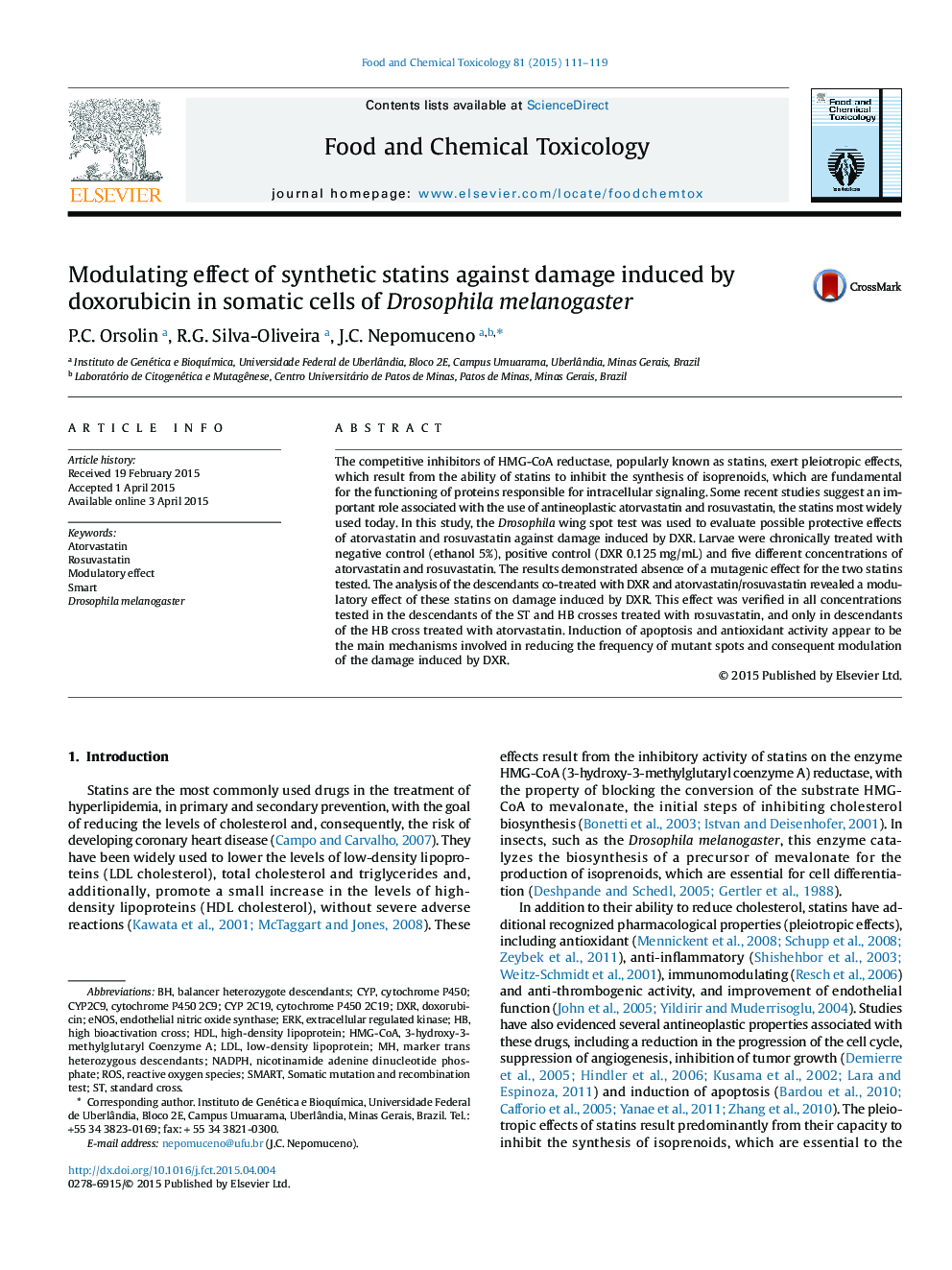| Article ID | Journal | Published Year | Pages | File Type |
|---|---|---|---|---|
| 5849763 | Food and Chemical Toxicology | 2015 | 9 Pages |
Abstract
The competitive inhibitors of HMG-CoA reductase, popularly known as statins, exert pleiotropic effects, which result from the ability of statins to inhibit the synthesis of isoprenoids, which are fundamental for the functioning of proteins responsible for intracellular signaling. Some recent studies suggest an important role associated with the use of antineoplastic atorvastatin and rosuvastatin, the statins most widely used today. In this study, the Drosophila wing spot test was used to evaluate possible protective effects of atorvastatin and rosuvastatin against damage induced by DXR. Larvae were chronically treated with negative control (ethanol 5%), positive control (DXR 0.125âmg/mL) and five different concentrations of atorvastatin and rosuvastatin. The results demonstrated absence of a mutagenic effect for the two statins tested. The analysis of the descendants co-treated with DXR and atorvastatin/rosuvastatin revealed a modulatory effect of these statins on damage induced by DXR. This effect was verified in all concentrations tested in the descendants of the ST and HB crosses treated with rosuvastatin, and only in descendants of the HB cross treated with atorvastatin. Induction of apoptosis and antioxidant activity appear to be the main mechanisms involved in reducing the frequency of mutant spots and consequent modulation of the damage induced by DXR.
Keywords
ERKCYP2C9HMG-CoAeNOSDXRModulatory effectNADPHCytochrome P450 2C9HDLCyPstandard cross3-hydroxy-3-methylglutaryl coenzyme Ahigh-density lipoproteinROSAtorvastatinSomatic Mutation and Recombination TestDoxorubicinRosuvastatinendothelial nitric oxide synthaseCytochrome P450Low-density lipoproteinLDLDrosophila melanogasternicotinamide adenine dinucleotide phosphateSMARTextracellular regulated kinaseReactive oxygen species
Related Topics
Life Sciences
Agricultural and Biological Sciences
Food Science
Authors
P.C. Orsolin, R.G. Silva-Oliveira, J.C. Nepomuceno,
